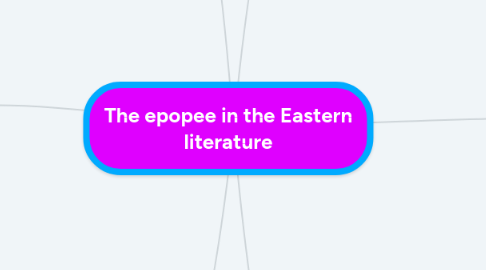
1. India
1.1. Phylosophy
1.1.1. Literature
1.1.1.1. Symbols
1.1.1.1.1. Writing methods
1.1.1.1.2. This writing system remains undeciphered, there is no agreement on the language it represents, no bilingual texts have been found this far and its connection with Indian writing systems proper is uncertain
1.1.1.2. Mahabharata, Ramayana
1.1.2. The term Indian literature is used here to refer to literature produced across the Indian subcontinent prior to the creation of the Republic of India in 1947 and within the Republic of India after 1947.
1.2. Their phylosophy were based even more in the after death better than the life, they though life just was temporary.
2. Chinese
2.1. Phylosophy
2.1.1. Literature
2.1.1.1. Symbols
2.1.1.1.1. Writing methods
2.1.1.1.2. They used to use bunch of symbols to write about the world around them
2.1.1.2. Montes de Oca, Confusius
2.1.2. Chinese literature is that much of the serious literature was composed using a formal written language that is called Classical Chinese.
2.2. China is "a country in which the prestige of the language has always surpassed the arms; symbolic is the fact that the first heroes that appear in his history are not conquerors, but educators and wise men
3. Mesopotamia
3.1. Phylosophy
3.1.1. Literature
3.1.1.1. Symbols
3.1.1.1.1. Writing methods
3.1.1.1.2. They use pictograms, cuneiforms, in the latest years of they community they use clay tablets to write
3.1.1.2. An, Enlil, Enki, Ninhursag, Nanna, Utu, and Inanna.
3.1.2. Despite the Sumerians’ leading role, the historical role of other races should not be underestimated.
3.2. Their phylosophy were influyed by the arabic religions, especially the Hebrew bible, the book of Genesis is a clear evidence of it
4. Egypt
4.1. Phylosophy
4.1.1. Literature
4.1.1.1. Symbols
4.1.1.1.1. Writing methods
4.1.1.1.2. They used to write in houses and temples, then they found the papyrus (A flower that flourishes near the Nile RIver)
4.1.1.2. The Scarab The Djed The Ankh
4.1.2. The Egypcians made their literature based on prayers in case of the deth they coud arrive safe and sound to their destiny
4.2. highlights the symbolism and religiosity that permeate their writings
5. Babylon
5.1. Phylosophy
5.1.1. Literature
5.1.1.1. Symbols
5.1.1.1.1. Writing methods
5.1.1.1.2. The Babylonians had a written language that they used for trade and communication. They got it from the Sumerians, who invented it. ... They wrote in two different languages: the Sumerian for religious purposes and Akkadian for official purposes.
5.1.1.2. Ashour Lion of babiion
5.1.2. We do not know what literature was composed in first-millennium Babylonia; we know only what literary works were kept in royal and private libraries of that period.
5.2. Babylonian astronomers began studying philosophy dealing with the ideal nature of the early universe, and began employing an internal logic within their predictive planetary systems, an important contribution to the philosophy of science.
6. Hebrew people
6.1. Phylosophy
6.1.1. Literature
6.1.1.1. Symbols
6.1.1.1.1. Writing methods
6.1.1.1.2. Early on in its development, cuneiform was written from left to right. It has been hypothesized that this is because right-handed scribes would smudge their work if they wrote from right to left
6.1.1.2. Isaiah, Jeremia, Joshuah, etc.
6.1.2. It is divided into Old Testament (life before Christ) and New Testament (Christ's life and what happens after death). The Old Testament is classified in several books:
